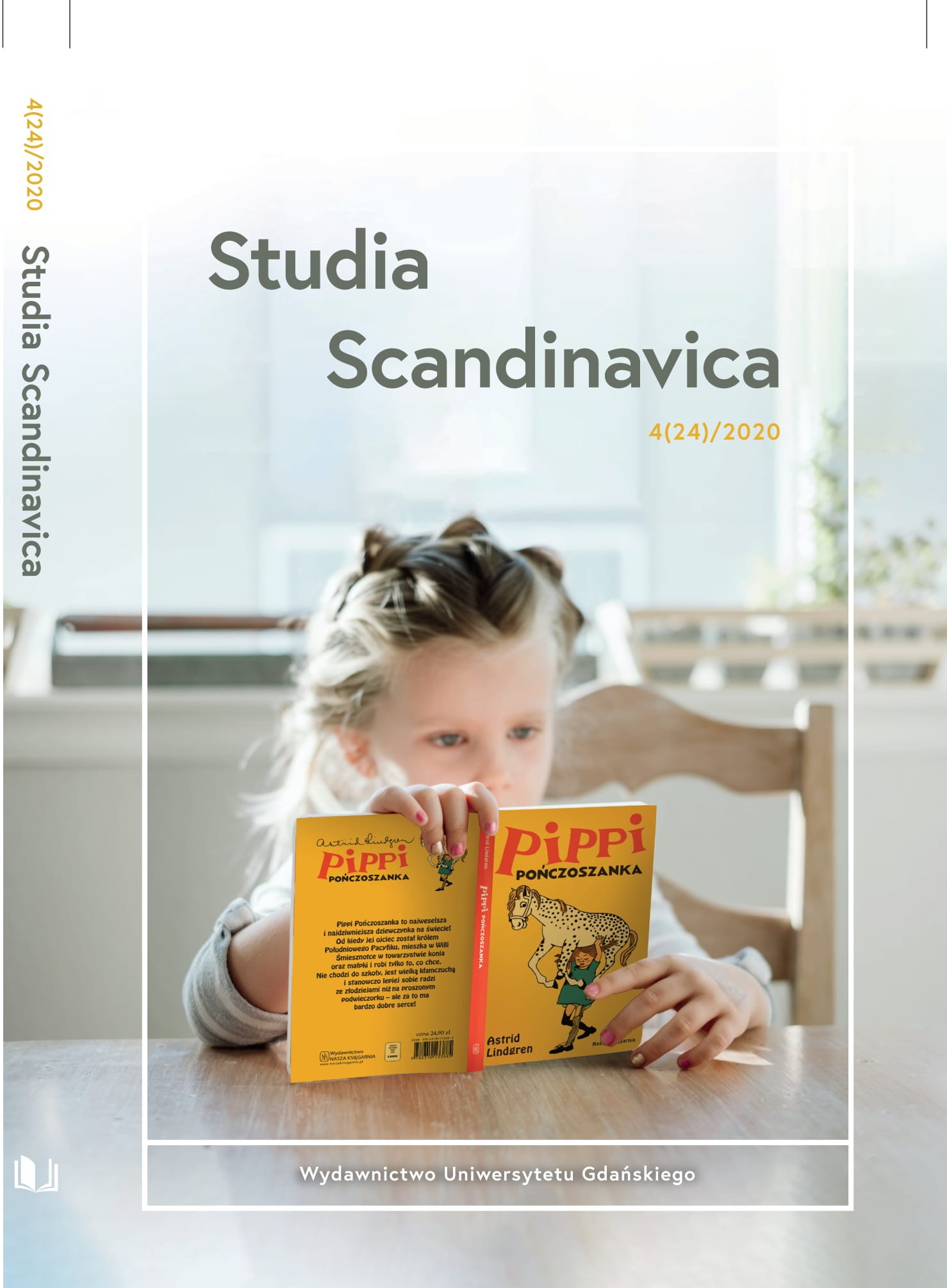Sztuka starości. Dwa późne wiersze Pära Lagerkvista w kontekście liryku ***I’ sto rinchiuso come la midolla… Michała Anioła Buonarrotiego
DOI:
https://doi.org/10.26881/ss.2020.24.04Słowa kluczowe:
Pär Lagerkvist Aftonland – interpretacja, Michał Anioł Buonarroti – poezje, Michał Anioł Buonarroti – wpływ na poezję współczesną, komparatystyka literacka, Pär Lagerkvist – tłumaczenia na język polskiAbstrakt
The subject of this article is an analysis of two poems by Pär Lagerkvist from his late book Aftonland (1953) in a context which has not been considered in previous research, i.e. a poem I’ sto rinchiuso come la midolla… by Michelangelo Buonarroti. In his poems about old age and the aging artist, Lagerkvist is close to some of the crucial poetic images drawn by Michelangelo – an artist whom the Swede highly esteemed. Additionally, a Polish translation of the two poems (Gammal genius. Vid färdens sista rast…) is proposed.
Downloads
Bibliografia
Berger, S. (2011). The Invention of European National Traditions in European Romanticism. In: S. Macintyre et.al. (eds.). The Oxford History of historical Writing, 1800–1945. Vol. 4. Oxford: Oxford University Press, s. 19–40.
Beyer, E. (1994). Henryk Ibsen. Transl. B. Danilszuk. Gdańsk: Wydawnictwo Gdańskie.
Bø, G. (1998). Nasjonalisme, skandinavisme og kristendom hos den unge Henrik Ibsen. In: I. Brohed (ed.). Nationalism och skandinavism i de nordiska folkkyrkorna under 1800-tallet. Lund: Lund University Press, s. 207–226.
Briggs A. and P. Clavin (1997). Modern Europe 1789–1989. A History of Europe. London: Longmann.
Daae, L. (1875). Fru Inger Ottersdatter og hendes Døttre. Historisk Tidsskrift 3: 224–366.
D’Amico, R. (2011). Historicism. In: A. Tucker (ed.). A Companion to the Philosophy of History and Historiography. Oxford: Wiley-Blackwell, s. 243–252.
Dawns, B.W. (1946). Ibsen. The Intellectual Background. Cambridge: Cambridge University Press.
Gil, T. (2011). Leopold Ranke. In: A. Tucker (ed.). A Companion to the Philosophy of History and Historiography. Oxford: Wiley-Blackwell, s. 383–392.
Grabski, A.F. (2000). Dzieje historiografii. Poznań: Wydawnictwo Poznańskie.
Ibsen, H. (1905). Letters of Henrik Ibsen. Transl. J. Nilssen Laurvik and M. Morison. New York: Fox, Duffield and Company.
Ibsen, H. (1911). The Works of Henrik Ibsen. Vol. 7–8. Transl. Ch. Archer and W. Archer. New York: Charles Scribner’s Son, https://babel.hathitrust.org/cgi/pt?id=iau.31858009741608&view=1up&seq=9 (access: 9.08.2020).
Ibsen, H. (1979). Brev 1845–1905, Ny samling. Vol. 1: Brevteksten. Oslo: Universitetsforlaget.
Ibsen, H. (2000). Samlede verker. Vol. 1. Oslo: Gyldendal.
Iggers, G. (2010). Introduction. In: L. von Ranke. The Theory and Practice of History. Transl. W.A. Iggers. New York: Routlegde.
Jæger, H. (1888). Henrik Ibsen 1828–1888. Et litterært Livsbillede. Kjøbenhavn: Gyldendal.
Koht, H. (1954). Henrik Ibsen. Eit diktarliv. Vol. 1. Oslo: H. Aschehoug & co.
Lorenz, Ch. (2011). Scientific Historiography. In: A. Tucker (ed.). A Companion to the Philosophy of History and Historiography. Oxford: Wiley-Blackwell, s. 393–403.
Moi, T. (2006). Ibsens modernisme. Transl. A. Øye. Oslo: Pax Forlag A/S.
Ording, F.R. (1927). Henrik Ibsens Vennekreds. Det Lærde Holland. Et kapitel av norsk kulturliv. Oslo: Grøndahl & søns boktrykkeri.
Schiffman, Z.S. (2011). The Birth of the Past. Baltimore: John Hopkins University Press.
Sokół, L. (1998a). Ibsen – mit osobisty. Konteksty. Sztuka ludowa 52 (3/4).
Sokół, L. (1998b). Peer Gynt jako wyzwanie. Dialog 43 (11).
Szelągowska, G. (1984). Narodowość i naród w romantycznych koncepcjach norweskiej szkoły historycznej. Przegląd Zachodni 40(1): 63–85.
Warren, J. (2004). The Past and its Presenters, an Introduction to Issues in historiography. London: Hodder & Stoughton Educational.
Woerner, R. (1895). Henrik Ibsens Jugenddramen. München: C.H. Beck.

 Uniwersyteckie Czasopisma Naukowe
Uniwersyteckie Czasopisma Naukowe





